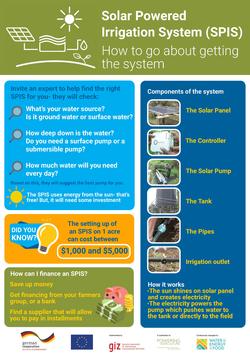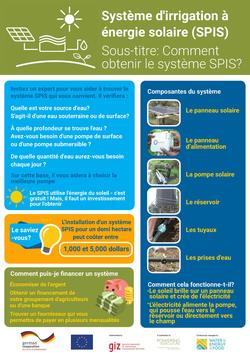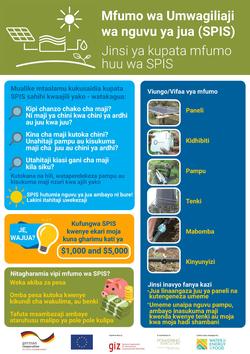Knowledge fuels change
For over a decade, Energypedia has shared free, reliable energy expertise with the world.
We’re now facing a serious funding gap.
Help keep this platform alive — your donation, big or small, truly matters!
Thank you for your support
Difference between revisions of "SPIS Set Up"
***** (***** | *****) m |
***** (***** | *****) m Tag: 2017 source edit |
||
| (25 intermediate revisions by 3 users not shown) | |||
| Line 1: | Line 1: | ||
| − | + | <div class="grid stretch-items"> <!-- Row1--> | |
| − | + | <div class="width-1-3"> | |
| − | + | {{Arabic Version|Toolbox on SPIS/ar}} | |
| − | + | </div> | |
| − | < | + | <div class="width-1-3"> |
| − | <div | + | {{French Version|Toolbox on SPIS/fr}} |
| − | + | </div> | |
| − | + | <div class="width-1-3"> | |
| − | + | {{Spanish Version|Toolbox on SPIS/es}} | |
| − | |||
| − | |||
| − | |||
</div> | </div> | ||
| − | + | </div> <!-- End Row1 --> | |
| − | |||
| − | |||
| − | < | ||
| − | |||
| − | + | {{SPIS Set Up}} <!-- This banner contains Row 2 --> | |
| + | {{Back to SPIS Toolbox}} | ||
| + | {{Set Up Text}} | ||
| + | {{SPIS Magic Words}} | ||
| − | + | [[Category:SPIS_Toolbox]] | |
| − | |||
| − | |||
| − | |||
| − | |||
| − | |||
| − | |||
| − | |||
| − | |||
| − | |||
| − | |||
| − | |||
| − | |||
| − | |||
| − | |||
| − | |||
| − | |||
| − | |||
| − | |||
| − | |||
| − | |||
| − | |||
| − | |||
| − | |||
Latest revision as of 14:52, 6 December 2021

Module Aim and Orientation
This module summarizes necessary steps for the installation of the Solar Powered Irrigation System. The design of the SPIS and the selection of the technology provider are completed (see DESIGN module). read more
The installation of an irrigation system requires planning and decision-making by the producer, as the system should be set up according to set preferences and operation requirements. This module contains the relevant process steps to be taken to finally set up the system. In this module it is assumed that the technology provider is not necessarily the service provider for the installation of the SPIS.
Process Steps
With the signing of a contract or purchase order with a technology provider all decisions concerning the system components have been made. The quotation or offer from the provider should include a system layout plan in which the specific installation requirements are described. The practical installation is often not done by the producer. read more
Instead, a qualified installer is required to assemble and mount the system components as required. A good quality installation lays the foundation for the reliable operation of the SPIS, taking into consideration the specific site conditions. The installation process will require active decision-making by the future user (i.e. the SPIS client or agricultural producer).
The set up or installation starts with choosing a suitable service provider. Then a detailed planning of the necessary works has to be made. In the installation planning, all requirements of the producer and the installer will be considered. Once the system components are installed, their proper functioning and the systems overall performance have to be tested.
The producer, as the future user of the system, has to follow this process closely to assure that the SPIS is installed according to the agreed planning and also to understand the system’s functionality. Upon completion of the installation, the producer should insist on receiving appropriate documentation of the system and a personal introduction to its operation.
Chapters
1. Select a suitable installer
2. Plan site preparation and installation
3. Install
4. Acceptance test PVP
5. System test
6. Documentation
7. Hand-over and user training
Supplementary Tools
Downloadable Posters
Further Readings
- Centre for Land and Water: Knowledge Resources for Primary Industry. Retrieved from http://www.claw.net.nz/resources/irrigation/
- Hahn, A., Sass, J. & Fröhlich, C. (2015): Manual and tools for promoting SPIS. Multicountry - Stocktaking and Analysis Report. GFA Consulting Group. Retrieved from Solar Powered Irrigation Systems - Technology, Economy, Impacts
- Schultz, R. & Suryani, A. (2015): EnDev2 Indonesia: Inspection Guide for Photovoltaic Village Power (PVVP) Systems. Edited by GIZ. Retrieved from https://energypedia.info/images/3/39/Inspection_Guide_for_PVVP_150524_(GIZ_2015).pdf






















